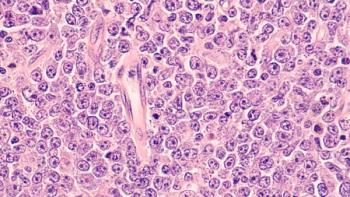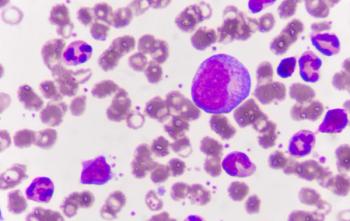
Video Conference Visits Effective in Reducing Stress, Anxiety in Caregivers for Patients with Cancer
The COVID-19 Pandemic has increased the use of video conference technology, but this technology has a lasting impact for caregivers in reducing their anxiety when it comes to continuing visits with patients with cancer.
The use of video conference technology significantly reduced anxiety and stress among individuals who provide care for an individual with cancer and live more than one hour away from the patient, according to data from a randomized controlled trial presented during a 2020 ASCO Virtual Scientific Program press briefing.
“Approximately 20% of all caregivers live more than an hour away from patients with cancer and approximately 30% of those distance caregivers are actually the sole caregiver,” Howard A. Burris III, MD, FACP, FASCO, president of the American Society for Clinical Oncology, said during the briefing.
Additionally, Burris noted that these results are even more relevant as the spread of the new coronavirus has affected the way patients and their caregivers receive care and information about cancer diagnoses and treatment.
“The coronavirus pandemic makes these findings particularly important because, currently, no caregivers are allowed to accompany cancer patients to their visits, essentially making all caregivers distance caregivers,” Burris said.
To test the effectiveness of an intervention aimed at reducing anxiety and distress in distance caregivers who support patients with cancer, 441 caregivers were randomized to one of three intervention arms. Caregivers in the first arm met with an advanced practice nurse or social worker through a video platform once a month for four months, participated in patient-oncologist visits via videoconference and had access to a website offering information specifically designed for distance caregivers. Caregivers in the second arm had access to the patient-oncologist visits and the website. And caregivers in the third arm, referred to as the control arm, only had access to the website.
Caregivers in the study were, on average, middle-aged, female, Caucasian, employed and the child of the patient.
To assess changes in distress and anxiety levels before and after the interventions, researchers had caregivers complete a questionnaire before the study began and at the end of the 4-month intervention.
According to measurements using the National Comprehensive Cancer Network Distress Thermometer, 24.8% of caregivers within the first arm experienced an improvement in distress score vs. 19.8% in the second arm and 18% in the third arm.
Using the Patient-Reported Outcomes Measurement Information System, 19.2% of caregivers within the first arm experienced an improvement in anxiety score vs. 17.3% in the second arm and 13.1% in the third arm.
The average office visit time for those in the first group was 19.6 minutes vs. 21.3 minutes in the second group and 17.8 in the third group, demonstrating that videoconferencing added two to four minutes to appointments but reduced the amount of time doctors spent afterwards answering questions from family members, said lead study author Sara L. Douglas, PhD, RN, The Gertrude Perkins Oliva Professor in Oncology Nursing at the Frances Payne Bolton School of Nursing in Cleveland. Additionally, on a satisfaction scale of 1-10 for videoconferencing, oncologists reported a score of 8, while patients had a score of 9.1 and caregivers reported a score of 9.3.
“Oncologists … should know that asking patients if they have a distance caregiver and then encouraging the distance caregiver to join office visits using video conference technology benefits not only the distance caregiver but the patient as well, and did not add a significant amount of time to the office visit,” Douglas said during a pre-recorded presentation.
Douglas noted that although the arm that offered all the forms of intervention had the best results, it is not always feasible to host every component of the intervention and, in instances where that is not feasible, patient-oncologist video conference visits show some benefit.
“While the full intervention yielded the best results for distance caregivers, we recognize that not all healthcare systems have the resources to provide individualized coaching sessions to distance caregivers,” she said.
Reference
Douglas SL. Videoconference intervention significantly reduces anxiety and distress among remote caregivers of people with cancer. Presented at: 2020 ASCO Virtual Scientific Program; May 12, 2020. Abstract 12123.
Newsletter
Knowledge is power. Don’t miss the most recent breakthroughs in cancer care.
















































































